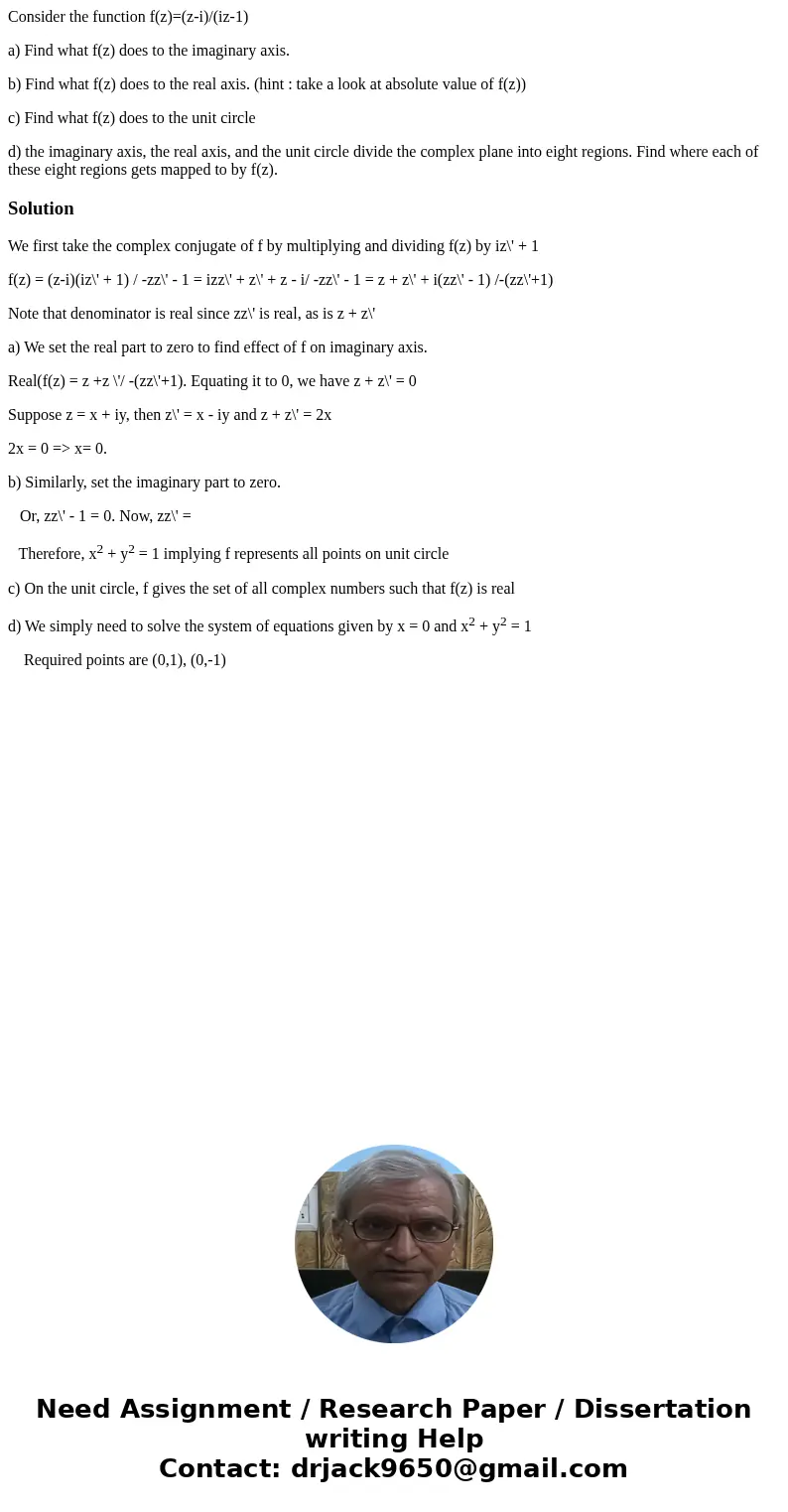Consider the function fzziiz1 a Find what fz does to the ima
Consider the function f(z)=(z-i)/(iz-1)
a) Find what f(z) does to the imaginary axis.
b) Find what f(z) does to the real axis. (hint : take a look at absolute value of f(z))
c) Find what f(z) does to the unit circle
d) the imaginary axis, the real axis, and the unit circle divide the complex plane into eight regions. Find where each of these eight regions gets mapped to by f(z).
Solution
We first take the complex conjugate of f by multiplying and dividing f(z) by iz\' + 1
f(z) = (z-i)(iz\' + 1) / -zz\' - 1 = izz\' + z\' + z - i/ -zz\' - 1 = z + z\' + i(zz\' - 1) /-(zz\'+1)
Note that denominator is real since zz\' is real, as is z + z\'
a) We set the real part to zero to find effect of f on imaginary axis.
Real(f(z) = z +z \'/ -(zz\'+1). Equating it to 0, we have z + z\' = 0
Suppose z = x + iy, then z\' = x - iy and z + z\' = 2x
2x = 0 => x= 0.
b) Similarly, set the imaginary part to zero.
Or, zz\' - 1 = 0. Now, zz\' =
Therefore, x2 + y2 = 1 implying f represents all points on unit circle
c) On the unit circle, f gives the set of all complex numbers such that f(z) is real
d) We simply need to solve the system of equations given by x = 0 and x2 + y2 = 1
Required points are (0,1), (0,-1)

 Homework Sourse
Homework Sourse